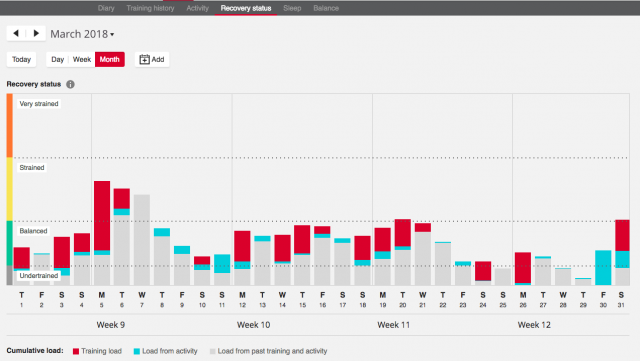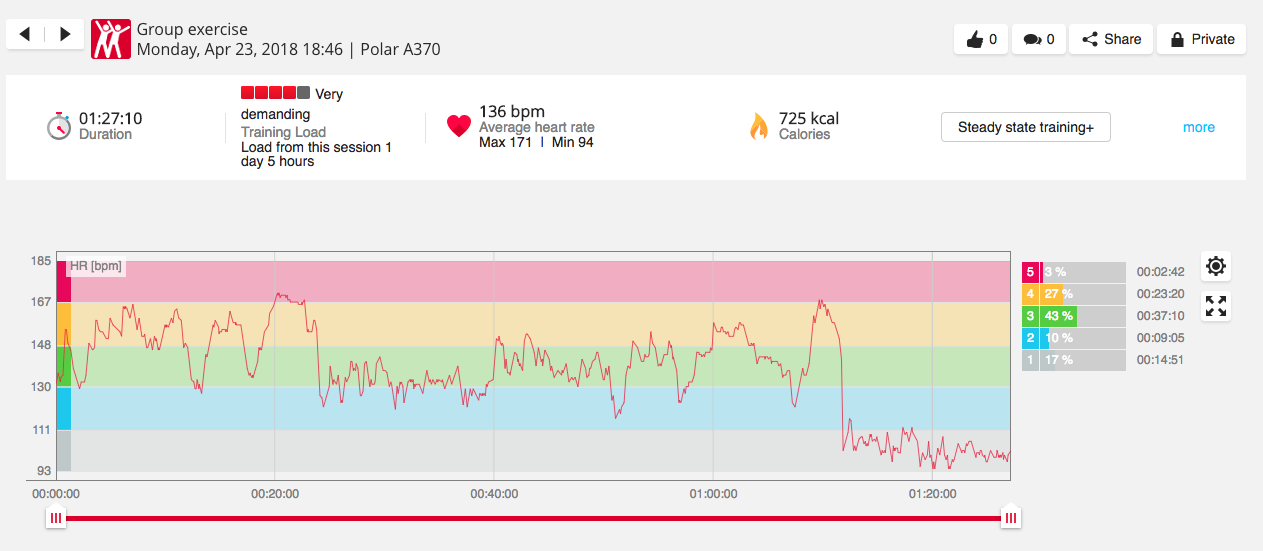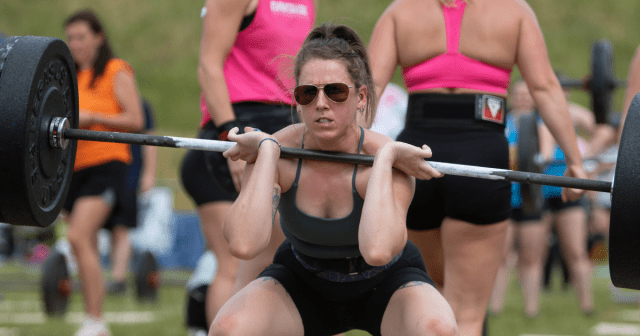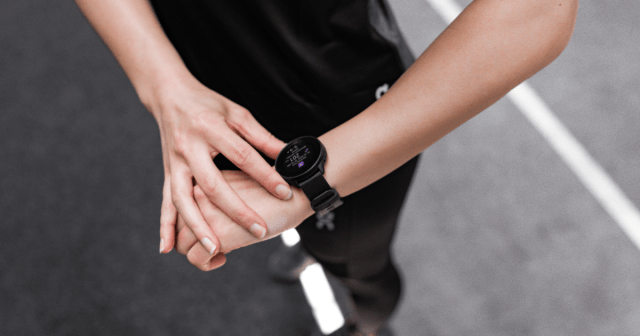One of the benefits of group fitness is that you don’t have to plan what to do during your workout, there’s an instructor for that, right?
Right… having someone who has already planned the workout and encourages you to get it done saves you time and energy to focus on the workout itself.
And wrong, if you think that means you can just do what you’re told without giving a single thought to what you’re doing and if it’s working for you.
Even when you work out in a group, led by an instructor, it’s still up to you to monitor if the classes are working for you as intended and if your workout schedule leaves you enough time for recovery.
Using a heart rate monitor in group fitness can help you get the most out of your experience – safely. Here’s how.
Do the right things – Plan your weekly workout routine
Isn’t the whole point in group fitness that someone else does the planning for you? Yeah, being carefree once you’re in class is one of the many benefits of group fitness – you don’t have to worry about what to do, the instructor will tell you.
If you always train with the same heart rate, your fitness won’t improve.
But, before the class, you have to decide which classes to take and plan your weekly workout routine so that it includes exercising on different intensity levels. Training always at the same intensity level is like indoor cycling – you can pedal like crazy but you won’t get anywhere. Meaning that if you always train with the same heart rate, your fitness won’t improve but you may put yourself at risk of injury or overtraining by doing too much.
Your body doesn’t always stick to the plan.
Sure, there are recommendations for planning your workout schedule, but that doesn’t mean your body will react as planned. That’s to say, even if the guy next to you in your BODYCOMBAT™ class is doing an all-in high-intensity training, it’s possible that your heart rate doesn’t climb quite as high. It’s the same class but you’re working out on different intensity levels.
If you don’t track your workout, you may think you did a high intensity session, even though you didn’t. Tracking your workouts will allow you to monitor if you worked out at the intensity you intended to and use your workout data to plan your fitness regimen more effectively.
Do the right things right – Adjust your workout
Most of us have been there: The exuberantly perky instructor keeps saying that this is the easy part before you reaaally start putting in the effort while you’re thinking “So, why am I huffing and puffing my lungs out and feel like my heart is jumping out of my chest?”. The workout is supposed to be easy, but if your heart rate is in the red zone, you need to take it even easier.
Using a heart rate monitor in group fitness is the metric that will tell you reliably if you should push more or hit the brakes during class.
So, even though group fitness classes are planned with certain goals in mind, we’re all individuals and our bodies don’t always react according to plan. How you feel is an important indicator of your exercise intensity but not always accurate. Using a heart rate monitor in group fitness is the metric that will tell you reliably if you should push more or hit the brakes during class.
If you take a BODYBALANCE™ class that’s supposed to be a low-intensity workout, but your heart is pumping and muscles are working on overdrive, you should take it easier to get that exercise benefit you’re aiming for. The only reliable way to know this is to use a heart rate monitor to measure the intensity of your efforts.
If your heart rate monitor has continuous, wrist-based heart rate tracking, it will tell you in real time how intense your workout is and you can adjust the intensity according to your heart rate right there in class.
See how you did – Analyze your heart rate data
Monitoring your heart rate while you’re exercising is one thing, but even better if you can look back at your stats afterward and analyze your workouts to make necessary adjustments.
Your training data will tell you if your weekly workouts went according to plan. This is the way to separate what you think you did from what you actually did.
To get a long-term benefit from heart rate monitoring, it’s essential to have all your training data saved in an app like Polar Flow for later use. Your training data will tell you if your weekly workouts went according to plan. This is the way to separate what you think you did from what you actually did. Knowing beats assuming, right?
In Polar Flow, you can check your Recovery Status that shows your load from training, daily activity, and past training and activity. This helps you make sure you have enough time to recover in between workouts and avoid overtraining (or under-achieving).

Keep doing it – Motivate yourself with visual data
Nothing meaningful in life comes easy. We all know this and yet, we easily get frustrated when we don’t see fitness results fast enough. When you start to doubt if all that BODYPUMP™ is really worth your while, seeing the visual data from your training sessions can give you an instant motivation to rush in and out of class.
Seeing the visual data from your training sessions can give you an instant motivation rush in and out of class.
Your efforts become tangible when you can see your stats after the workout and compare each session to your entire training history.
If you’re using a Polar fitness watch, you can see your weekly and monthly training summaries, daily activity goal and stats for each workout in Polar Flow (and if you’re a LES MILLS fan, you can add the LES MILLS sport profiles and check LES MILLS workout-specific stats):
- Average heart rate
- Time spent in different heart rate zones
- Calories burned
- How demanding the training was for you and the training benefit (e.g. recovery, steady state or tempo).

Show ‘em how it’s done – Share your workouts and inspire others
Once you’ve gotten the hang of your new fitness program or gotten comfortably back to your old routine (hopefully with some cool new stuff in there, right?), you can share your best workouts via Polar Flow.
Sharing your success to the world can motivate you and inspire others. And, since sharing is about caring (not bragging), why not share even the less successful ones and let others learn from your mistakes?
If you liked this post, don’t forget to share so that others can find it, too.
Or give it a thumbs up!
I like this article
Please note that the information provided in the Polar Blog articles cannot replace individual advice from health professionals. Please consult your physician before starting a new fitness program.





